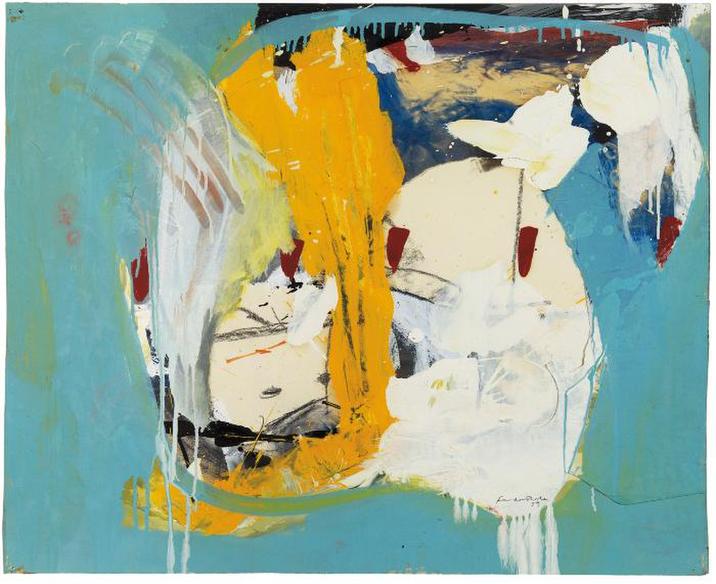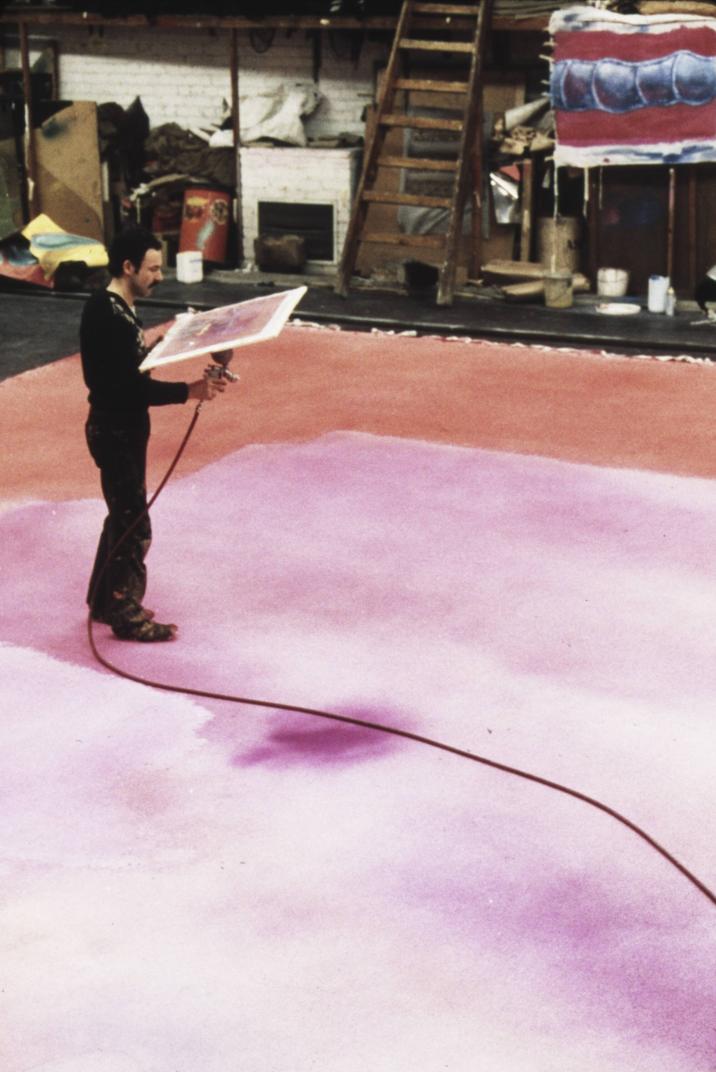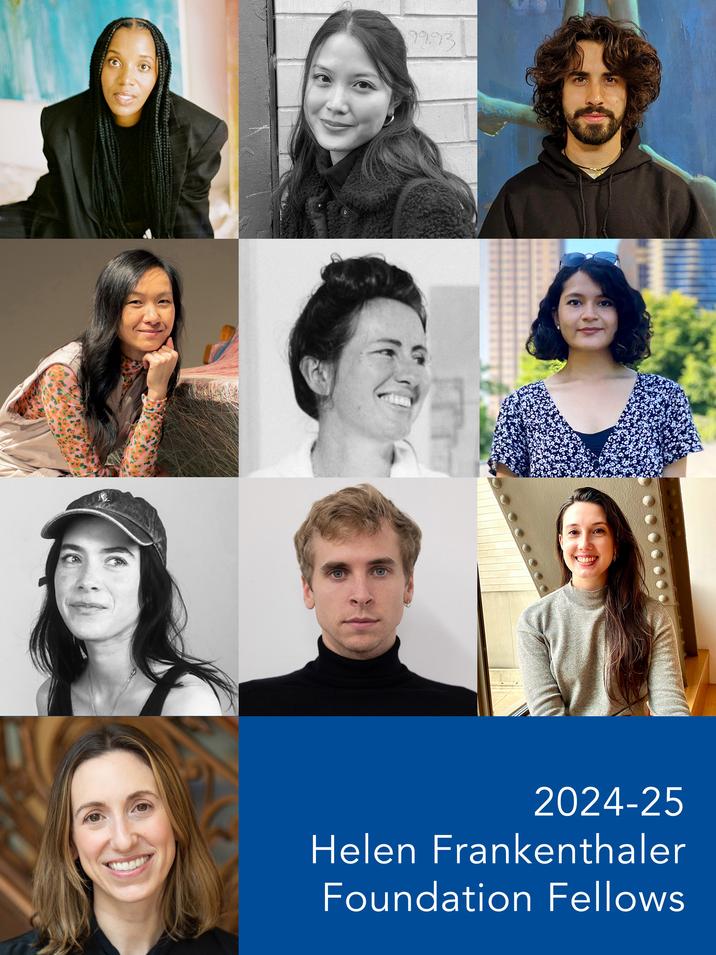The Helen Frankenthaler Foundation presents Nowscape, a new online publication dedicated to sharing news from our community and research supported by the Foundation’s educational initiatives.
The title Nowscape comes to us from Frankenthaler’s creative practice. It appears on lists of potential titles maintained by the artist during her career. Currently held in the Foundation’s archives, Frankenthaler’s title lists feature poetic and evocative arrangements of words which she would turn to upon the completion of an artwork. As Frankenthaler described, “As I need a title, and it seems fitting to the picture, I scan the list and, I think, perfect! That’s it.” The lists include struck-through phrases—titles that made the transition from potential to official artwork title during the artist’s lifetime. Many permanently remain in this state of creative ideation.
Reviving the unused title Nowscape gives new life to a seed of Frankenthaler’s creative impulse decades after its inception. It recreates the artist’s act of holding space for creative potential, which we believe is at the heart of any educational endeavor. In this spirit, Nowscape generates an inclusive forum for emerging voices in the arts to both reflect upon and be reflected within Frankenthaler’s legacy through their unique contributions.
Stay tuned for articles by our interns and colleagues, updates on our educational activities, and special announcements.

Helen Frankenthaler, Summer Picture, 1959. Oil, crayon, and collage on paper, 19 x 23 3/8 in. ©2025 Helen Frankenthaler Foundation, Inc./Artists Rights Society (ARS), New York.
Beautiful Order
by Giovanna Becerra
Perhaps not as well-known as her paintings, Frankenthaler's body of work in collage holds valuable insight into the artist’s technique and use of non-traditional materials. There are many examples throughout her oeuvre that honor her idea of making sense of human emotion and experience. Through the artist’s collage, we see this unfold through her abstraction of memory and everyday ephemera. Frankenthaler’s use of color, form, and composition creates a familiar and deeply moving experience for the viewer, allowing them to connect with her work on a personal level with every layer.
Read Giovanna’s essay at the link below.
Download PDF

A member of the Covent Garden Production Department and Harkers Studio painting the Royal Ballet set for the 3rd Movement of Number Three, London, January 1985. Helen Frankenthaler Foundation Archives, New York. Photograph by Darryl Williams.
Transcending Number Three
by Valerie Rodriguez
Amid the uplifting press that followed the opening of her 1985 Guggenheim show Works on Paper, 1948–1984, Helen Frankenthaler was turning her attention to the Royal Opera House production of choreographer Michael Corder’s ballet Number Three for which she would fill a guest role of costume and set designer. Armed with wisdom and support—from costume designer Willa Kim, fashion designer Oscar de la Renta, and artist David Hockney—she created thirty drafts of set designs for Corder’s composition.
Number Three premiered at the Royal Opera House in Covent Garden on March 9, 1985. Set to Prokofiev’s Piano Concerto No. 3, it was a striking contrast to Frankenthaler’s abstract works. Despite the critical response from London’s conservative press and dance community, the stage was a space where Corder and Frankenthaler found unity; a space in which Frankenthaler performed her own painterly dance.
Read Valerie’s essay at the link below.

2024–25 Helen Frankenthaler Foundation Fellows left to right, top to bottom: Lindsay Adams, Emily Chun, Antonio Vidal de Lascurain, Sheng Lor, Rose McBurney, Adriana Obiols Roca, Marissa O’Donnell, Blake Oetting, Nora Rosengarten, Samantha Small (photo: Alex Irklievski).
Announcing the 2024–25 Helen Frankenthaler Foundation Fellows
We are delighted to announce this year’s cohort of Helen Frankenthaler Foundation Fellows across MFA and PhD programs at nine universities. In 2019, the Foundation gifted endowments to four major universities to establish annual Helen Frankenthaler Foundation Fellowships awarded to outstanding MFA students with a concentration in Painting. The following year, the Foundation expanded the program to establish endowments at five additional universities with exceptional PhD programs in Art History.
This year’s recipients include:
MFA Programs
• Lindsay Adams, School of the Art Institute of Chicago
• Antonio Vidal de Lascurain, Columbia University
• Sheng Lor, University of California Los Angeles
• Rose McBurney, Yale University
• Marisa O’Donnell, University of California Los Angeles
PhD Programs
• Emily Chun, Stanford University
• Adriana Obiols Roca, University of Chicago
• Blake Oetting, New York University
• Nora Rosengarten, Harvard University
• Samantha Small, City University of New York

